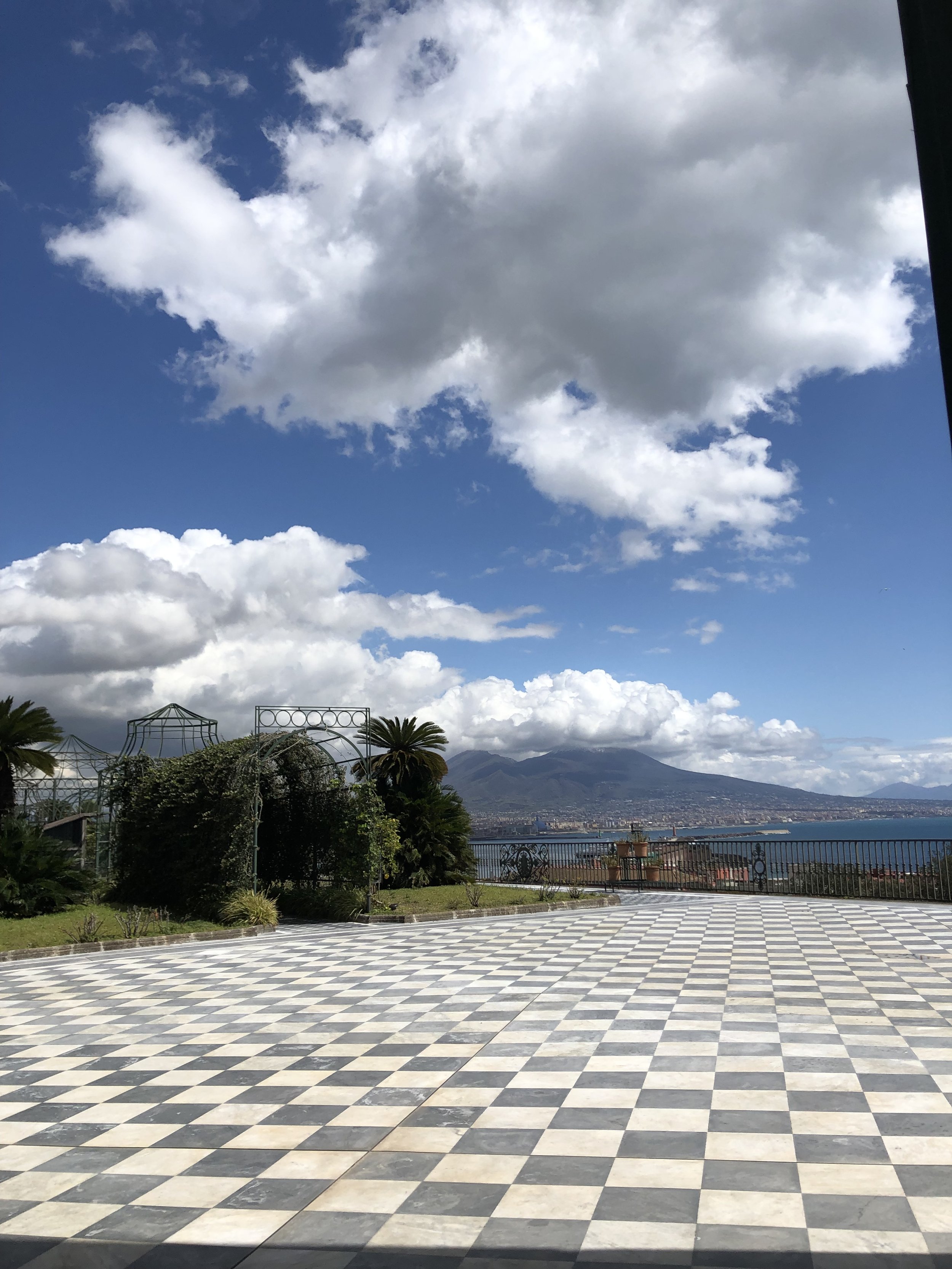Royal Palace and Piazza Plebiscito
The niches with statues of the Kings of Napoli on the main façade in Piazza Plebiscito.
The entrance for the National Library, where girl from Naples studied during her university years, a long time ago.
The Royal Palace and Piazza Plebiscito is the centre of Neapolitan life, today and in the past. The Royal Palace was built on the site of an earlier residence, which had housed the former viceroy Don Pedro de Toledo, Marquis of Villafranca. It was built to accommodate King Philip III of Spain when he came to visit this part of his kingdom, but he never came. In 1600-02, the architect Domenico Fontana started the construction of the palace in a square plan, with a courtyard in the middle. The front of the building looks onto piazza del Plebiscito. In 1743-48, the palace was enlarged, looking how we see it today, by the then King of Naples Joachim Murat and his wife Carolina Bonaparte, sister of Napoleon. In 1837 it was seriously damaged by a fire, but was then restored by Gaetano Genovese, who modified the monumental staircase and created the elegant hanging garden overlooking the sea. After the fire, the court was moved from the apartments on the first floor to the second, which is now The National Library. During the centuries, the palace housed the Royal Press, The Royal Tapestry Factory, the Bourbon Archive and the Musical Archive of the Royal Chapel. The building was the seat of the Napoli monarchy, where the Spanish and Austrian viceroy lived, then the Bourbon kings and finally the Savoy family. In 1888, the main façade was decorated with niches with contained eight statues of the most important kings of Napoli, in order: Roger the Norman, Frederick II of Hohenstaufen, Charles I of Anjou, Alphonse I of Aragon, Charles V of Hapsburg, Charles of Bourbon, Joachim Murat and Vittorio Emanuele II of Savoy. Since 1919, it has been possible to visit the Historical Apartments with the superb restored throne, the Court Theatre and the National Library, which is one of the most important in Europe, with its collection of over a million and a half books, third century palimpsests, fifth century codes, medieval books and papyrus from Herculaneum.
The entrance to the palace is on the side, through the Honour Courtyard and the spectacular staircase in white marble. Here there are the Royal Apartments, including the King's apartments, the Throne Hall, the Picture gallery, The Ambassadors Hall, The Queens Apartments and the Palatine Chapel. From this floor it is possible to access the hanging gardens on the seafront.
The back of the Royal Palace, view from the Gardens.
Piazza Plebiscito facing the San Francesco and Paola church, inspired by the Pantheon and Saint Peter church in Rome.
Piazza del Plebiscito is the biggest square of the city and the most important for the historical events that took place there. If you have the Royal Palace at your back, you will have in front of you the monumental church of San Francis and Paola. In the centre of the square are the two equestrian statues of Charles of Bourbon and Ferdinand I by Antonio Canova. The square is called Plebiscito, after the plebiscite (the direct vote of all the members of an electorate on an important public question such as a change in the constitution) taken in 1860 when Napoli became a part of the new Kingdom of Italy. It was Joachim Murat who planned and started the construction of the huge square to honour Napoleon, but only when the Bourbons returned was it completed.
In the past it was the centre of the French Revolution but today Piazza del Plebiscito is an important venue for many events and concerts. Many musicians have preformed here such as, Sting, Elton John and Bruce Springsteen just to name a few. The New Year's Eve concert takes place here every year.
Piazza Plebiscito during the final of the World Cup in 2006 when Italy won againsT France.
Official website: the Royal Palace
Piazza del Plebiscito, 1 - 80132 Napoli
Tel.: +39 081 580 82 89
Email: m-cam.palazzoreale-na@benicultirali.it
Free entry every first Sunday of the month.
Opening hours: Mon - Sun 09.00 - 20.00 [Last admission at 19.00]
Closed on Wednesdays, Christmas, New Years Eve, May 1st, August 15th.
Nearest metro station: Linea 1 - MUNICIPIO or with the funicular Centrale - AUGUSTEO.

















